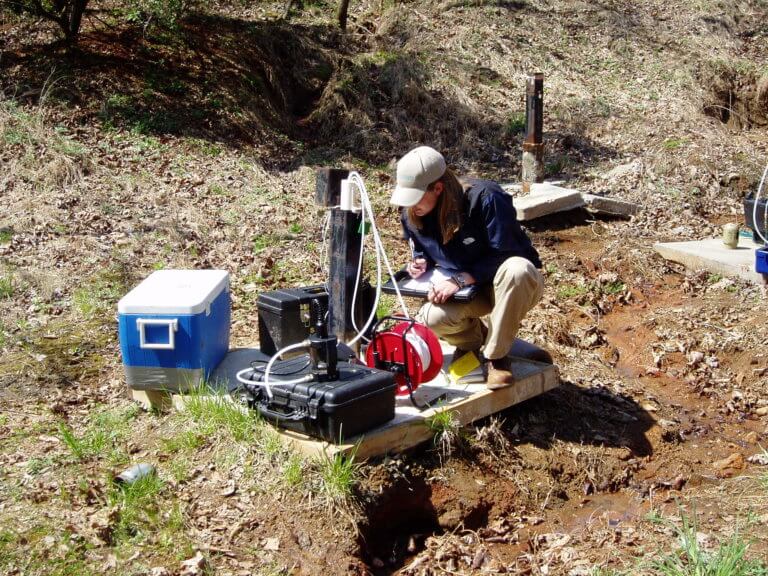There are multiple potential sources of PFAS that some suggest could contribute to the cross-contamination of environmental samples during collection. PFAS use is widespread in many consumer, commercial, and industrial products and processes. PFAS are also reported at very low concentrations. As such, sampling programs have been designed to consider as many sources of PFAS contamination as practicable. In an effort to avoid potential PFAS cross-contamination, sampling personnel have been directed to go to great lengths and do things like:
- Only use sampling equipment such as tubing, bailers, tape, plumbing paste, and sampling bottles and caps that do not contain Teflon™ or other PFAS-containing components.
- Avoid the use of glass sampling containers or equipment, as PFAS compounds adsorb to glass
- Use sampling containers made of high-density polyethylene (HDPE), low-density polyethylene (LDPE), polypropylene (PP) or silicon-based materials.
- Avoid the use of other materials that may contain trace levels of PFAS, including sticky notes, waterproof field notebooks or logbooks, aluminum foil, permanent markers and methanol.
- Avoid the use of blue ice for cooling samples or for other uses on site.
- Abstain from wearing water-resistant, waterproof, or stain-treated clothing prior to, or during, sample
- Wear clothing that has been laundered at least six times since
- Avoid the use of cosmetics, moisturizers, hand creams and other personal care products containing surfactants.
- Use sunblock and insect repellants that consist of only 100% natural ingredients.
- Abstain from handling prepackaged food and snacks.

These guidelines may seem extreme, and many wonder if these precautions are actually warranted. Some have questioned if there have been any studies conducted to evaluate the effects of cross-contamination if some or all of these precautions are not followed. We have heard some members of the environmental community beginning to ask these questions and some are embarking to conduct studies to assess the actual impacts. Until then, we should err on the side of caution. These are our best practices and should be followed. Better safe than sorry, for now.


